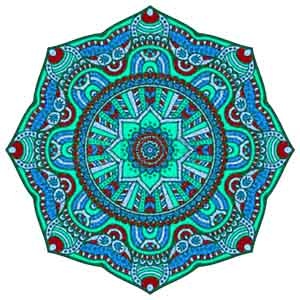
The 411 on Paintbrushes Rollers and Painting Pads
When that decorating bug bites and you decide to start with a fresh coat of paint, the painting tools you choose can make a big difference in the outcome of your work. This definitely includes with paintbrushes rollers and painting pads you choose. Buy the best quality painting tools you can afford. Those cheap brushes will leave streaks and loose bristles all over your painted surface!
Old-fashioned natural bristle paint brushes are perfect for oil-based paints. Natural bristles do not work well in water-based or latex paints. Natural bristles absorb water from the paint and become limp; in oil-based paint they retain the firmness necessary for the paint to flow correctly from the tips of the bristles.
Synthetic bristles are tapered and individually split on the painting ends so they can hold more paint and spread it smoothly. Hold a cheap synthetic paintbrush next to an expensive one, and the difference will be astounding. The expensive brush will have softer bristles, and more of them, tightly packed into the ferrule. The ferrule itself will probably be more tightly crimped. The bristle tips of an expensive brush will feel soft and hair-like; they will be split and feathered to provide more paint-capturing ability and smoother delivery of the paint onto the surface. You can use synthetic bristle paint brushes with any type of paint, so buying a few good brushes and taking care of them is a wise investment. Note: Keep brushes you use for oil-based and water-based paints separate. Residues from oil-based paint or cleaning solvents do not mix with water-based paint.
Painting pads are another choice. Pads are thin synthetic foam with short, hair-like bristles to spread paint evenly over flat surfaces. The pad fits onto a metal or plastic frame with a handle, so you can buy one handle assembly and replace pads as often as you need to. The pads are washable, but after several hours of use you will probably want to opt for a new one. Painting pads give a very smooth finish. Some pads have small “wheels” along the edge that act as guides along woodwork or at the ceiling/wall joint, and there are even pads in an “L” shape made specifically for painting inside corners.
Today’s paint rollers are wonderfully superior to the cardboard-core rollers of years ago. The newer plastic core rollers hold the nap firmly, and they give a sturdy rolling surface that doesn’t become limp. Plastic core rollers are washable and reusable, too. Water-based paints can be cleaned out of the nap with a little warm water and dishwashing liquid. Select the nap of your roller according to the desired finish on your wall. Short, smooth nap gives you smooth, even paint application. Thick nap was designed to cover textured walls/ceilings.
If you need to take a break from painting for a couple of days, place any of these tools in a plastic bag without cleaning off the paint, seal the bag, and put it in the freezer. You can store the brushes or tools in the freezer for a week or two. Simply thaw the brush (still in the sealed bag) at room temperature for at least an hour when you are ready to paint again. You’ll know when your brush or tool is ready to use when it becomes soft and flexible again. If you see frosty moisture crystals inside the bag, it may indicate an air leak, so check the condition of the painting tool before using it. If any of the paint dried while the tool was in freezer storage, you’ll want to clean or replace the tool.
Sources:
Personal experience finding and trying my own paint brushes rollers and painting pads
Home Depot paint department
Thank you for reading this article! If you have any further questions about this topic please contact us.
